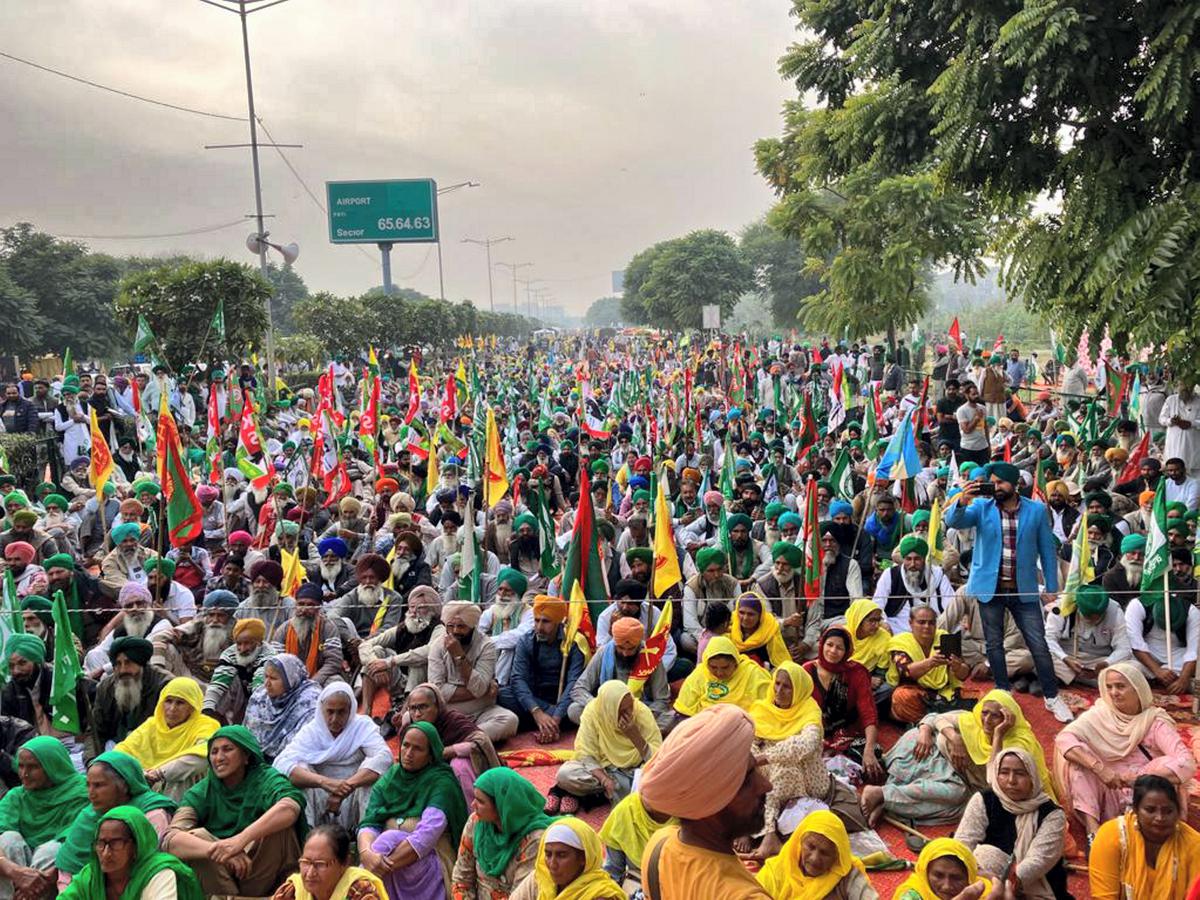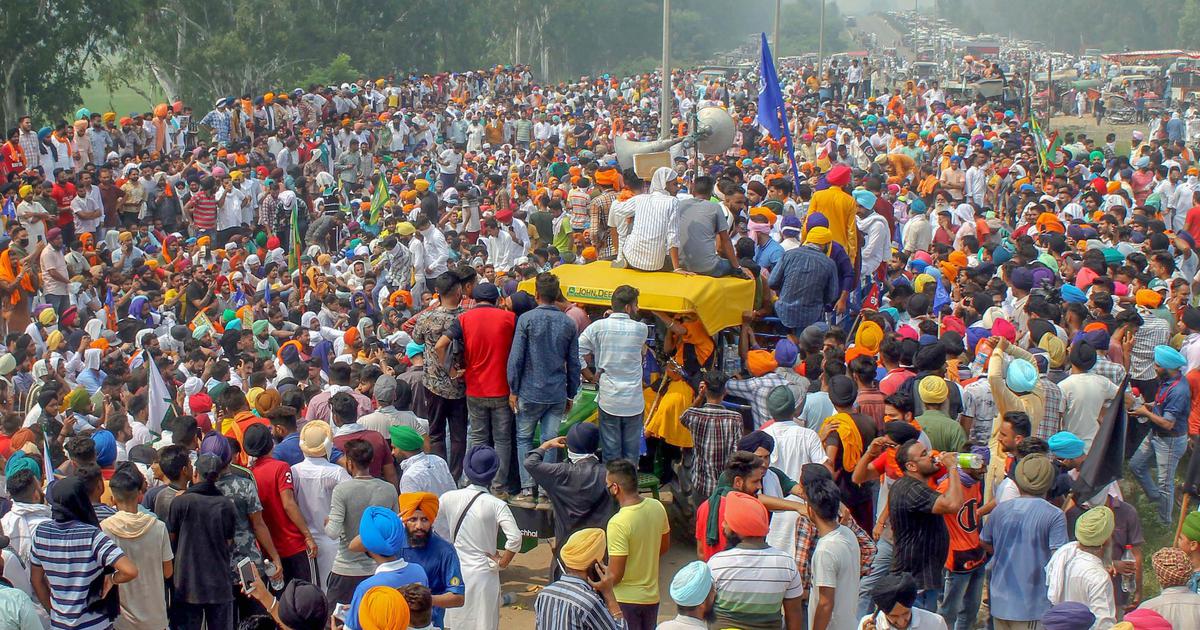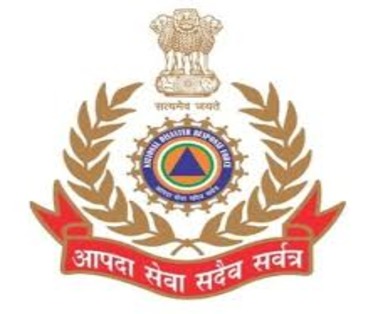Explore the ongoing farmer protests in Punjab starting from October 26, 2024, as thousands of farmers demand swift paddy procurement, adequate fertilizer supply, and fair stubble burning regulations. Understand the role of farmer unions, the government’s response, and the broader impact on Punjab’s agrarian economy and political landscape.
)
1. Background: Recurring Issues in Agriculture
The roots of this protest lie in longstanding grievances that have been building over years. The primary concerns include:
- Slow Paddy Procurement: Farmers have expressed dissatisfaction with the delays in paddy procurement. Delays in clearing old stock from storage facilities have left little room for new harvests, impacting farmers’ income and livelihoods.
- Fertilizer Shortages: The unavailability of DAP fertilizer, crucial during the sowing season, has heightened tensions. Farmers argue that insufficient supply could severely impact the productivity of the upcoming Rabi crop
- Stubble Burning Penalties: The imposition of penalties for stubble burning has further inflamed the situation. Farmers have criticized the government’s approach, arguing that they lack viable alternatives to manage crop residue

2. Leadership and Mobilization: Role of the Samyukta Kisan Morcha (Non-Political)
The Samyukta Kisan Morcha (Non-Political) has played a pivotal role in organizing the protests. Sarwan Singh Pandher, one of the leading voices, emphasized that the protests would continue until their demands are met. Demonstrations have been strategically positioned in key areas like Sangrur, Moga, Phagwara, and Batala
This decentralized approach aims to maximize pressure on both state and central governments without causing widespread disruptions to ordinary citizens.
3. The Government’s Response: A Balancing Act
The Aam Aadmi Party (AAP)-led state government, headed by Chief Minister Bhagwant Mann, has faced criticism from various quarters. Mann has called on the central government to expedite the evacuation of old grain stocks, which would create space for new arrivals
However, the situation remains tense, with the state opposition, including the Congress and Shiromani Akali Dal, pointing fingers at the AAP’s handling of the procurement process.
- Dialogue with the Central Government: CM Mann’s outreach to Union Home Minister Amit Shah aimed to bring relief to the situation but has not yet led to any breakthrough
- Central vs. State Blame Game: The blame game between the state government and the Bharatiya Janata Party (BJP)-led central government has become a critical narrative of the protest. While the state blames the Centre for slow stock evacuation, the Centre has highlighted the inefficiencies in state-level handling of paddy procurement.
4. Ground Reality: Farmer Hardships Amid Protests
For the farmers involved, the protest is about survival. Delays in payments, increased costs due to fertilizer shortages, and the looming fear of penalties have put immense pressure on small and marginal farmers. For many, the protests are a last resort to draw attention to their plight and secure the future of their families.
5. Strategic Protests: Impact and Challenges
The “chakka jam” (road blockade) strategy employed by farmers is designed to bring attention to their demands while minimizing confrontation. As of now, the protests have led to disruptions in traffic at key locations but have remained peaceful
The farmers have warned that if their concerns are not addressed, they could escalate the protests to a “do-or-die” battle, potentially leading to more widespread disruptions.
6. The Broader Implications for Punjab’s Agrarian Economy
The farmer protests hold significant implications for Punjab’s agrarian economy. Paddy procurement is crucial for maintaining the cash flow of rural households during the harvesting season. Delays in procurement can affect not just the farmers but also other stakeholders like rice millers, transporters, and laborers.
- Economic Impact: Prolonged protests can disrupt supply chains, impacting the entire agricultural economy of the region. For a state heavily reliant on agriculture, these disruptions could translate into economic distress.
- Political Ramifications: With upcoming elections, political parties are keenly watching the protests. The outcome of the agitation could influence voter sentiment in rural Punjab, making it a critical issue for both state and national elections.
7. Environmental and Policy Concerns: The Stubble Burning Dilemma
Stubble burning remains a contentious issue. The burning of crop residues has been a cause of severe air pollution in northern India during the winter months. However, farmers argue that the alternatives provided by the government are not economically viable
While the government pushes for sustainable methods, the lack of effective support mechanisms keeps this issue unresolved.
8. A Look Back: Comparisons to the 2020-2021 Farmer Protests
The current protests have drawn comparisons to the massive farmer protests of 2020-2021 against the now-repealed farm laws. While the scale is different, the underlying concerns about farmers’ rights and economic viability remain similar. Both movements highlight the ongoing struggle between the agricultural community and policymakers.
9. The Road Ahead: Possible Resolutions and Challenges
For the protest to end constructively, a few measures can be considered:
- Improved Procurement Processes: Streamlining paddy procurement and ensuring timely payments could alleviate immediate economic pressures on farmers.
- Enhanced Fertilizer Supply: A coordinated effort between state and central governments is required to ensure adequate supply of DAP and other fertilizers.
- Dialogue and Mediation: Open channels of communication between farmer unions, state representatives, and central authorities could pave the way for a negotiated settlement.
Conclusion: A Crucial Moment for Punjab’s Farmers
The protests starting on October 26, 2024, represent a critical moment for Punjab’s farmers. The outcome of this agitation will not only affect the livelihoods of thousands of farmers but will also have far-reaching consequences for Punjab’s agricultural sector and its political landscape. As both sides continue to hold firm, the need for a balanced and empathetic approach becomes ever more crucial in finding a lasting resolution to this complex issue
This detailed account aims to highlight the multifaceted nature of the ongoing protests and their potential implications, underscoring the urgency for a resolution that benefits both the agricultural community and the broader society.
This blog provides an overview of the farmer protests in Punjab starting from October 26, 2024, based on available information from various sources. The analysis and opinions expressed are meant for informational purposes only and do not reflect the stance of any particular organization or political entity. While efforts have been made to ensure accuracy, the situation is evolving, and some details may change over time. Readers are encouraged to consult multiple sources and stay updated with official announcements for the latest developments.




